On the wider of the two columns on this webpage, each of the countries I've been to has been illustrated in chronological order.
Below this paragraph is a list of the countries in alphabetic order. Click on a country's name to be taken straight to it.
|
|
This page in my website was prompted by my grandson, Simon. When he was seven years old, he asked, “Papa Nigel, how many countries have you been to?” I told him that I didn’t know, but that I’d sit down and try to work it out.
I soon realised that Simon’s question was not an easy one to answer – and that’s not because I’ve forgotten where I’ve been or when I went there. The problem is how countries are counted, and what counts as a country. To cut to the chase, though, all bar two of the countries I’ve lived in or visited is either a current or former member of the United Nations, or a current member of FIFA (i.e., the Fédération Internationale de Football Association). The two exceptions are the Vatican City and Antarctica. However, the Vatican is universally recognised as a sovereign state, and portions of Antarctica are claimed by seven different countries, so I have obviously included those two places too.
I’ve used three photographs to illustrate each of the countries I’ve visited.
- The first of the three photographs is of the country’s flag. I sometimes jokingly describe myself as an amateur vexillologist. I’ve taken photographs of flags for more than 60 years and still enjoy the challenge of trying to capture all the elements of a country’s, state’s, or province’s flag against as clear as possible a backdrop. When a country’s flag has changed – as has been the case, for instance, in South Africa, as well as in the former Southern Rhodesia, which is now called Zimbabwe – I’ve used the latest version of its flag. The only exceptions to this are two of the countries that no longer exist – namely, East Germany and Yugoslavia, where I’ve used photos of the flags that they used when I visited them.
- I decided that the second of the three photographs in each set must always be a picture that I personally took and that it should, if at all possible, unambiguously represent that country. For example, the second photo in my set of three pictures illustrating France is one I took of the Eiffel Tower. It’s surely impossible to see a picture of the Eiffel Tower and not think “Ah, France!” Sometimes it hasn’t been possible to use a picture of an iconic, immediately identifying, totally relevant subject, but I am pleased to say that I’ve personally taken a photograph in every country I’ve ever been to.
- And the third photograph in each set of three has been chosen because it shows either me in the country concerned, or – at very least – it shows that I have been there. For seven of the countries I’ve been to, I have had to photograph stamps in one of my passports because there are no photographs whatsoever of me in Andorra, the Cook Islands, Hong Kong, Indonesia, Liechtenstein, Northern Rhodesia, and Thailand. In countries where no photographs were taken of me and for which I didn’t have passport stamps that I could photograph, I’ve included a second (hopefully relevant) photograph that I took in the country.
I’ve had a great deal of fun not only reviewing where I’ve been in my life but also choosing photographs (taken over a period of almost 80 years) that illustrate the fact that I have been extremely fortunate to have been able to travel fairly widely (including visiting each of the world’s seven continents). However, the truth is that although I’ve …
Crossed the deserts bare, man
I've breathed the mountain air, man
Of travel I've had my share, man …
I’ve not been everywhere. Indeed, my answer to Simon’s question is that I’ve been to 66 countries (but this figure can be queried in several ways, and the answer could possibly range from 63 to 71).
******************************
UNITED KINGDOM OF GREAT BRITAIN AND NORTHERN IRELAND
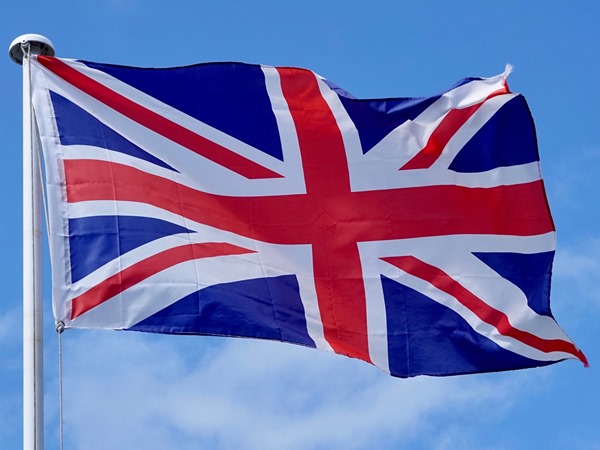
The flag of the United Kingdom is particularly attractive and striking. It incorporates the red cross of Saint George, the patron saint of England, as well as the diagonal crosses (or saltires) of Saint Andrew and Saint Patrick, the patron saints of Scotland and Ireland respectively. It’s one of the world’s most easily recognised flags.

The Palace of Westminster, the home of the United Kingdom’s parliament, and its Big Ben clocktower are among the most-easily recognisable buildings in the world.

This is the first photograph I know of that was taken of me. I was five-and-a-half months old when it was taken in Devon, England. I lived in the United Kingdom for a total of six years – from 1944 to 1947, and then from 1967 to 1969. That’s the third longest that I’ve spent in any of the 60 or so countries I’ve been to.
******************************
ENGLAND

England’s national flag, featuring the red cross of Saint George.

Stonehenge – a prehistoric monument on the Salisbury Plains in Wiltshire, England – is more than 4,000 years old.

I was born in London, which is in the south of England, but my father was born in 1911 in Washington, county Durham, which is in the north of the country. In this photograph taken in 2012, I’m standing in front of 55 Glebe Crescent in Washington, co. Durham, with an extract from the 1911 England and Wales census which shows that this was where my father and his parents, Harry and Olive Roberts, were living in 1911.
******************************
THE NETHERLANDS

The red, white, and blue horizontal stripes of the Netherlands’ national flag, which is thought to be “the oldest tricolour flag in continuous use.” Although orange is often regarded as the Netherlands’ national colour, a 1654 treaty between the English and the Dutch banned members of Willem’s House of Orange from becoming king, and the colours of the Dutch flag were changed.

Is there anything more representative of the Netherlands than these Kinderdijk windmills?

I was three years old when my family moved from London to Utrecht, the fourth largest city in the Netherlands, and we lived there for 18 months. Twenty years later, Heather and I visited Utrecht and explored some of the places – such as this fountain at the foot of city’s Domtor (i.e., Cathedral tower) – that I’d been to as a young child.
******************************
SOUTH AFRICA

This has been the South African flag since 1994. Despite the fact that the flag is a fairly new one, its bright colours and distinctive design have made it highly recognisable.
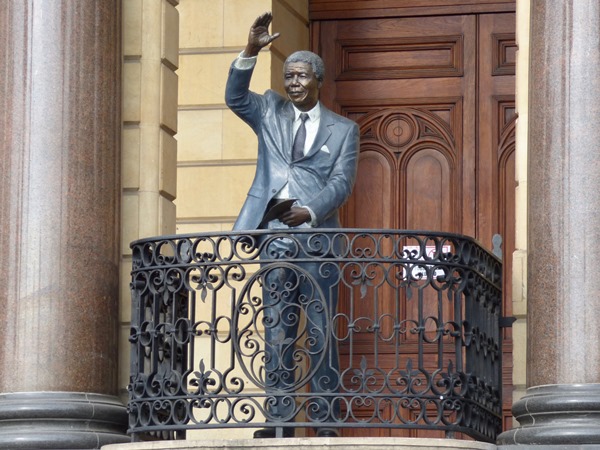
A statue of Nelson Mandela depicting the time he stood on this balcony in Cape Town after he was freed from prison in February 1990. It was the beginning of a period of dramatic – but largely peaceful – political change in South Africa, and Mandela went on to become the country’s first black president after the country’s first all-race parliamentary elections were held in 1994.
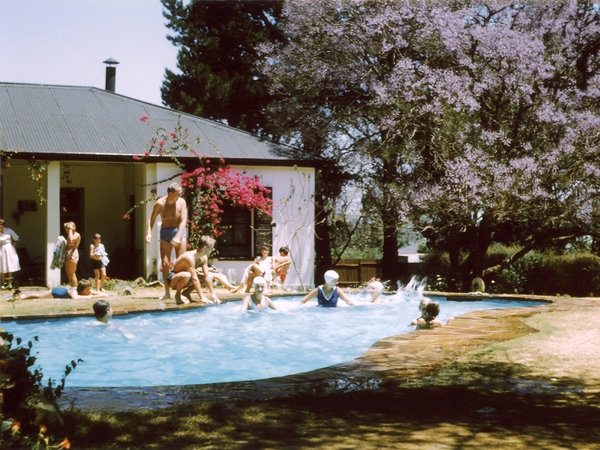
In January 1949, when I was nearly five years old, my family – my parents, an older brother, a younger brother, and I – migrated from England to South Africa. We lived in South Africa for thirteen-and-a-half years, and in this house in Parktown North, Johannesburg, for 11 years. A swimming pool makes you very popular: my mother Lilian, my younger brother Stuart, my youngest brother Charlie, my sister Linda, and I are all visible in this picture, but we’re outnumbered two to one by friends and visitors!
******************************
SWAZILAND; now ESWATINI
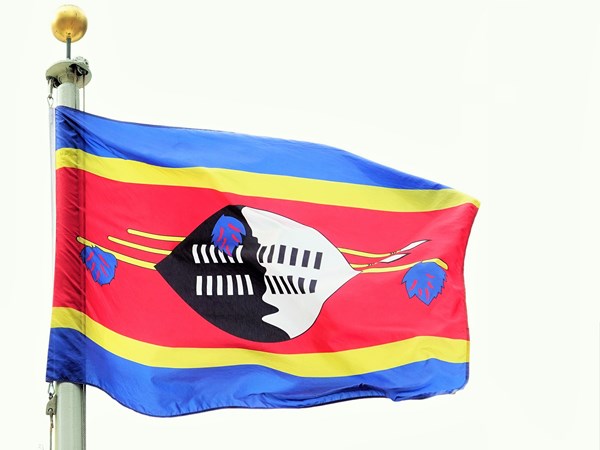
This distinctive design featuring a Swazi shield and weaponry has been the country’s flag since 1968.

I first went to Swaziland in early 1952. My father took me there for a brief holiday after I’d spent three miserable weeks (including Christmas Day 1951) in hospital with an undiagnosed disease. I loved the country from then on. Seven years later, I took this photograph of two friends and fellow boy scouts, Keith Norman (left) and Joe Farragher, while we were camping on a property near Piggs Peak.

The last time I visited Swaziland was in August 1998 (20 years before the country changed its name to Eswatini). This photograph was taken of me after I'd been for a nine kilometre run in Sibetsamoya, which is in the south-western corner of the country.
******************************
SOUTHERN RHODESIA; now ZIMBABWE

This has been Zimbabwe’s national flag since 1980. The soapstone bird on the left is a representation of a statue found in the Great Zimbabwe ruins and is a symbol of the country’s long and complex history.

The Victoria Falls are probably the best-known tourist attraction in Zimbabwe. I first visited these world famous waterfalls in July 1953, when I went on a family holiday to Southern Rhodesia together with my parents, older brother Anthony, and younger brother Stuart.

This picture was taken in August 1998 of me running with my youngest brother Charlie’s four children near their holiday cottage in Nyanga.
*******************************
NORTHERN RHODESIA; now ZAMBIA
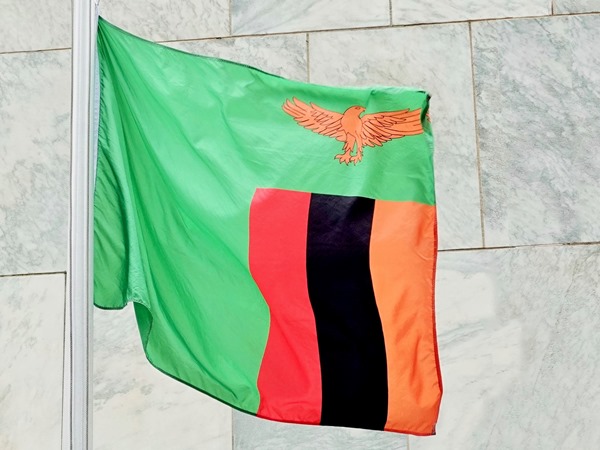
This has been Zambia’s flag since the country achieved independence in October 1964.

This is one of the very few photographs that I ever took in Northern Rhodesia (and I’ve not been back to the country since it changed its name to Zambia). It was taken in July 1960 and shows my hitch-hiking partner, Richard Darley, after we’d successfully hitched a ride on a goods train that took us from Pemba to Monze.

Together with my parents and some of my siblings, I visited Northern Rhodesia in 1953 and 1957. In December 1959, Garth Hoets and I hitch-hiked through Northern Rhodesia on our way to Tanganyika. A few weeks later I hitch-hiked home on my own and was given this stamp in my passport when I re-entered Northern Rhodesia at Tunduma, which is on the Tanganyika / Northern Rhodesia border.
*******************************
TANGANYIKA; now TANZANIA
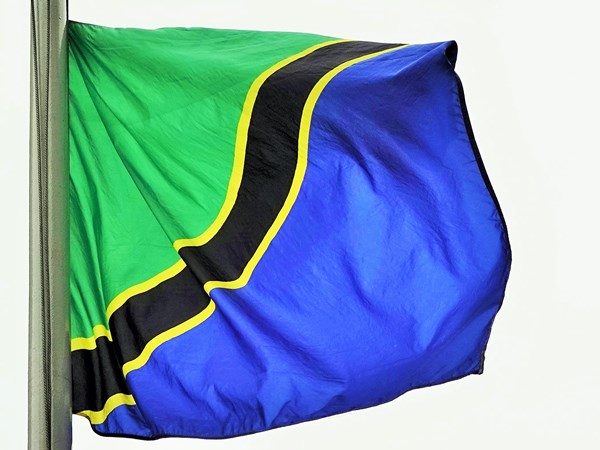
Tanganyika was a British territory from 1916 until 1961, when the country gained its independence. Three years later, however, Tanganyika and Zanzibar merged and became Tanzania, so this is the second flag the country has had since independence.

Mt Kilimanjaro, 5,895 m / 19,340 ft, the highest mountain in Africa, is in the north of the country, very close to the Kenyan border. I took this photograph of Kibo, the higher of the Kilimanjaro’s two main peaks, in December 1959, when I first tried to climb the mountain. I didn’t succeed then.

I successfully climbed Mt Kilimanjaro in December 1985.
*******************************
BASUTOLAND; now LESOTHO

Like the flag of Swaziland / Eswatini, a prominent cultural symbol is also present in the centre of the Lesotho flag – namely, a Basotho hat (or mokorotlo).
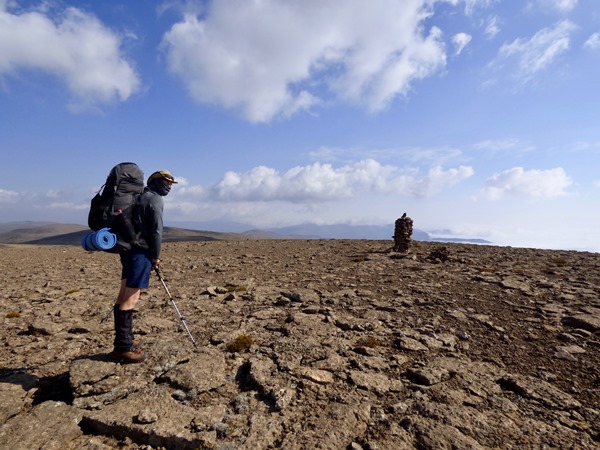
Basutoland / Lesotho is a landlocked, mountainous kingdom. The large cairn near the centre of this photograph marks the border between Lesotho (which is on the left) and South Africa (on the right).

I first entered Basutoland when I went on climbing trips in the Drakensberg mountains in 1961 and 1962. In 2019, I returned to the Drakensberg for the first time in 57 years when I climbed Mafadi, the highest mountain in South Africa. In this photograph of me on the border, half of me is in Lesotho and half is in South Africa.
*******************************
UNITED STATES OF AMERICA

The flag of the United States of America – the Stars and Stripes – is one of the most recognisable flags in the world. The stars represent the number of states in the USA; since 1959, there have been 50. The stripes represent the original 13 colonies that revolted against British rule in 1776 and formally merged to form the United States in 1789.

The Statue of Liberty in New York harbour is, like the American flag, widely recognised throughout the world as a symbol of the USA.

I first went to the United States in August 1962 as an American Field Service (AFS) scholar. This picture was taken in 1988 when I was on my fourth visit to the USA and caught up with Louise and Ralph Liske, who had been my AFS host parents in Kent, Ohio, from August to December 1962.
*******************************
BELGIUM
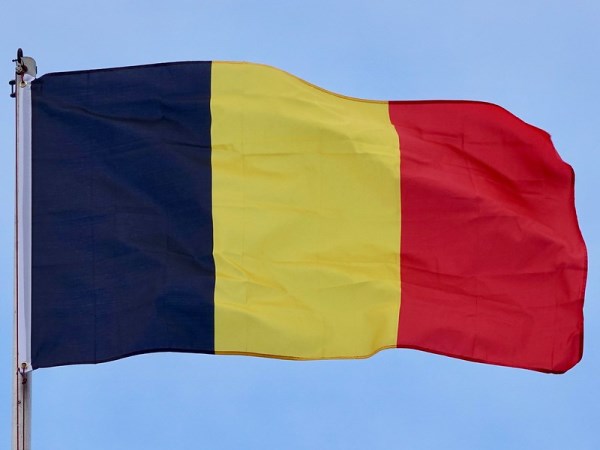
Belgium’s flag has three stripes – black, yellow, and red – and so too does Germany’s flag, but the stripes on Belgium’s flag are vertical, whereas the stripes on the German flag are horizontal. (How to remember which is which? GH are next to each other in the alphabet; think of those two letters as standing for Germany Horizontal.)

I have been to Belgium on several occasions, but only in 1963 – on my first visit to the country – did I spend more than one night there, when I visited a friend in Liege. This is a photograph that I took near the centre of Liege. It’s neither an iconic nor particularly well-known scene, but it does at least feature two Belgian flags (near the left- and right-hand edges of this picture).

The passport stamp I was given when I entered Belgium for the first time.
*******************************
LUXEMBOURG
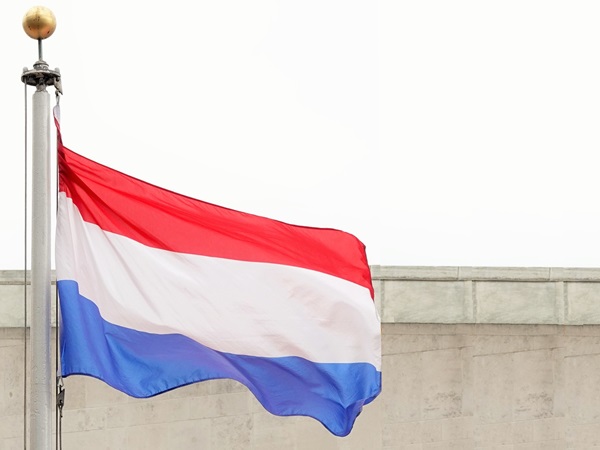
Luxembourg’s flag is very similar to the Netherland’s flag. (Its dimensions are slightly different, and the red and blue stripes are a bit lighter.) This has “given rise to a national debate to change” the flag.

I drove through Luxembourg on 21 August 1963. It was the first and only time I’ve been there, and the only photograph I took in Luxembourg was this one of my grandmother’s three-wheel Heinkel bubble-car (which she lent to me when I was in Europe and she was living and working in Australia).

No-one stamped my passport to show I’d either entered or left Luxembourg, and I haven’t got a photo of me in the country either, so instead here’s a photograph of a cloth patch that I bought featuring Luxembourg’s roude leiw (red lion) ensign.
*******************************
FRANCE

Many flags have three vertical stripes (the Belgian, Irish, and Italian flags are three other examples), but the French tricolore is probably the best known of all.

The Eiffel Tower has become a symbol not of just of Paris but of all of France.

Although I spent quite a lot of time in France in 1963, and Heather and I drove though the country in 1969, I didn’t visit Paris until 2006. I’ve been back twice since then, and each time I’ve been to Paris I have really enjoyed catching up with Axel Holstensson, a friend who was at primary school with me in Johannesburg in the mid-1950s. This is a photo of the two of us enjoying café life on the Champs-Élysées.
*******************************
SWITZERLAND
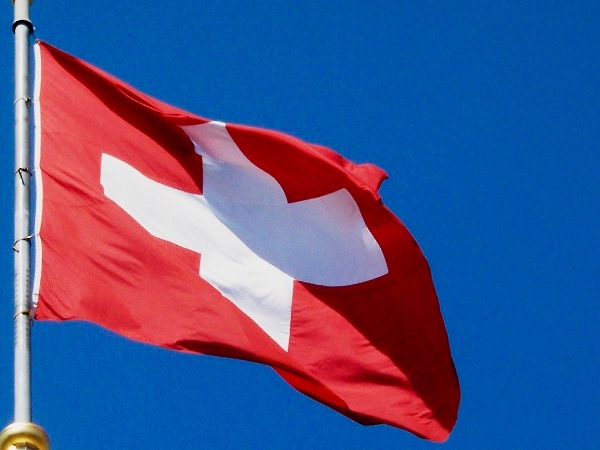
The Swiss flag is unique; it’s square. Its white cross on a red background is also almost as well-known as the symbol for the Red Cross, which – due to the organisation’s Swiss roots – is actually the reverse of the Swiss flag.
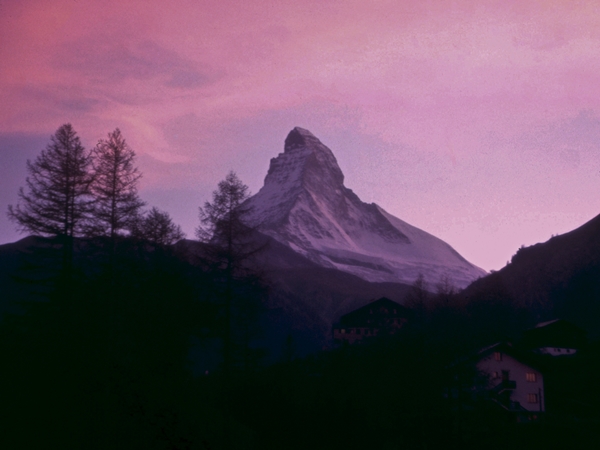
Switzerland is a landlocked, mountainous country, and the best known of all its mountains – indeed, one of the most recognisable mountains in the world – is the Matterhorn. I took this photograph of the Matterhorn (4, 478 m / 14,692 ft) in August 1963.

I first went to Switzerland in 1963 because I wanted to climb the Matterhorn. I didn’t climb it then, and I never have. However, I climbed the Allalinhorn – a 4,000-metre peak in the Swiss Alps – in August 2004, and this is a photograph that was taken of me on the summit.
*******************************
LIECHTENSTEIN
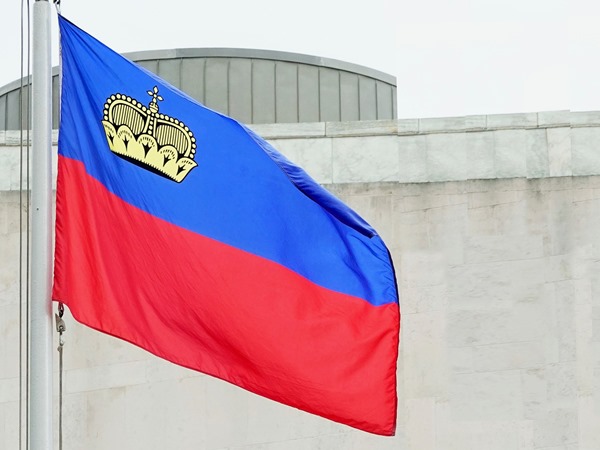
Liechtenstein is a small doubly-landlocked country sandwiched between Switzerland and Austria, and the crown on its flag is a reminder of the fact that the country’s full name is the Principality of Liechtenstein and that its head of state is a prince.

I met Gary Wells, Dave Prigge, and Bill Kilbourn in the youth hostel in Zermatt, Switzerland, in 1963, and a few days later teamed up with them and we travelled together for the next seven weeks. We stopped while we were driving through Liechtenstein and I took this picture of Gary, Dave, and Bill, and our cars (my Heinkel bubble-car and their Citroen deux-Chevaux). Six years later Heather and I also drove through Liechtenstein, but I didn’t take any photographs then, so this remains the only photograph I’ve ever taken in the country.

A stamp in my passport which shows that the first time I visited Fürstentum Liechtenstein (i.e., the Principality of Liechtenstein) was on 31 August 1963.
*******************************
AUSTRIA
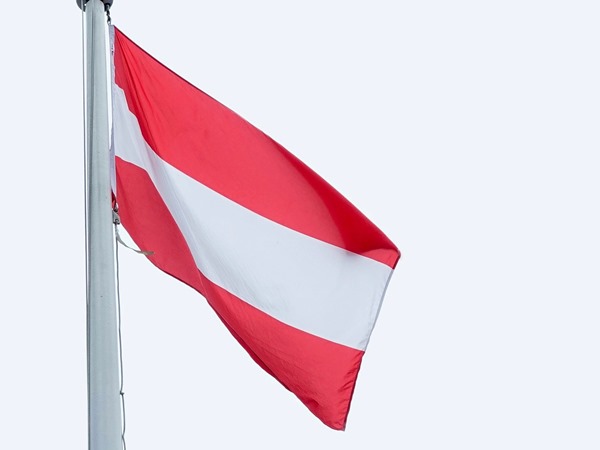
The Austrian “triband” is one of many flags with red and white as its sole colours.
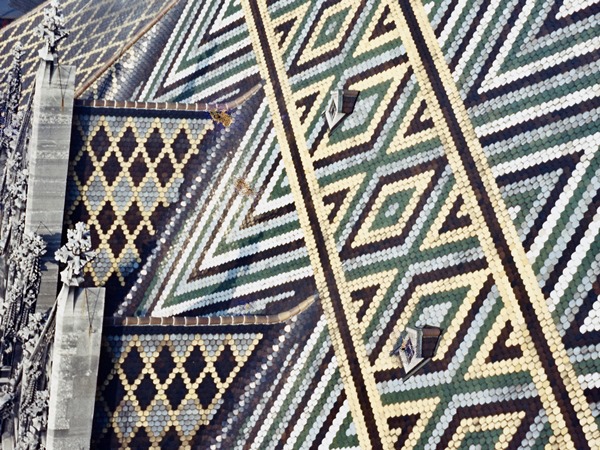
The distinctive pattern on the tiled roof of St Stephen’s Cathedral in Vienna makes it easy to recognise the building and distinguish it from many other somewhat similar Gothic cathedrals.

The only picture of the four of us (from left to right, Gary Wells, Bill Kilbourn, Dave Prigge, and Nigel Roberts) while we travelled round Europe in 1963 was this one, which was taken on 4 September 1963 in Schlatt, Austria.
*******************************
WEST GERMANY

The West German flag with its three horizontal bands is also the flag of the reunified Germany. Just as “… G, H, …” is a mnemonic device for remembering “Germany, Horizontal”, so too is the fact that the colours on the German flag appear from top to bottom in alphabetic order – namely, Black, Red, and Yellow.
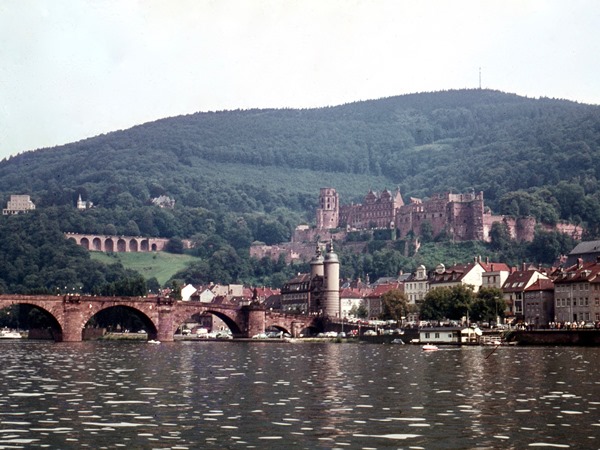
I visited West Germany on three occasions while it was still West Germany – that is, in 1963, 1967, and 1969; and I’ve also been to the reunified Germany on three occasions – in 1994, 1998, and 2009. I particularly wanted to show a picture that I took in West Germany that is (as far as possible) genuinely representative of that country. As a result, I chose this photograph that I took in 1967 of Heidelberg, home of the country’s oldest university.
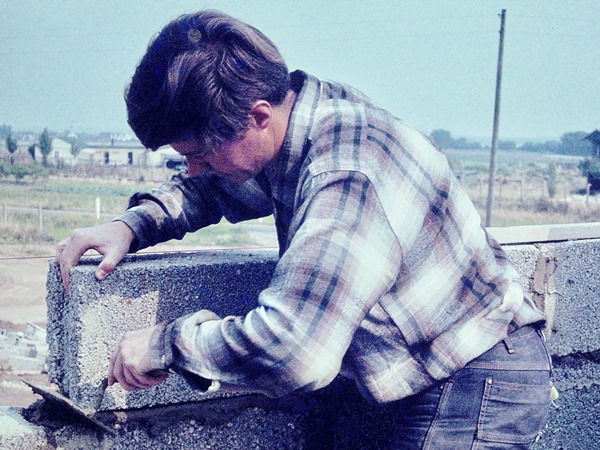
In August 1967, after hitch-hiking from England to West Germany, Heather and I spent three weeks at a work camp on a cooperative housing estate on the outskirts of Worms. This photograph was the only one ever taken of me during my brief career as a manual labourer.
*******************************
ITALY

The distinctive green, white and red bands of il Tricolore, the Italian flag.
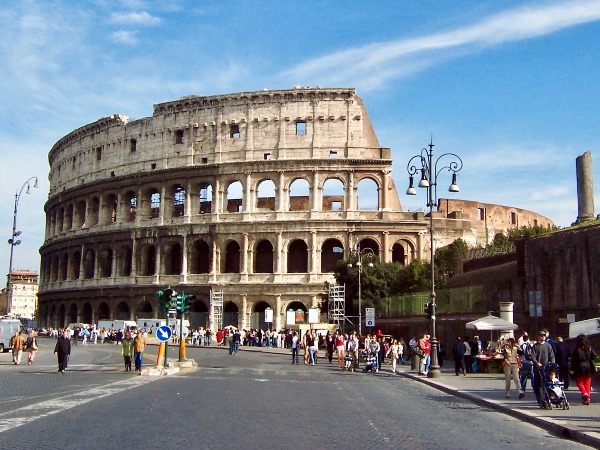
Is any building anywhere more representative of its country than the Colosseum is of Italy?

I went to Italy in 1963 and again in 2006. Both times I caught up with Alessandro Subissi, whom I first met when we were AFS students in Ohio in 1962-63. This picture of me was taken in 2006 when, together with Alessandro (on the left), his wife Peira, and two of their friends, we were celebrating my 62nd birthday in a tiny restaurant in the hills above Pisa.
*******************************
YUGOSLAVIA
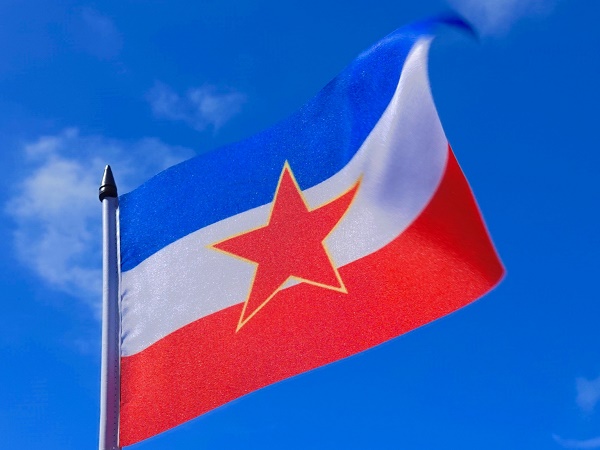
Yugoslavia was a country that was created in the aftermath of the First World War and which disintegrated in the early 1990s. As a result, this is the flag of a country that no longer exists.

In September 1963, Bill Kilbourn, Dave Prigge, Gary Wells, and I drove from Italy through Yugoslavia in order to reach Greece, one of our primary travel goals. We took the quickest route possible through Yugoslavia and saw nothing whatsoever of its beautiful Adriatic coast. As a result, I decided that my picture of a representative object or place in Yugoslavia would be these photos of a hundred dinar note, because it at least shows someone in national costume and Dubrovnik, a UNESCO World Heritage site (that’s now in Croatia).

I haven’t got a picture of me in Yugoslavia, but I do at least have one of my (grandmother’s) car a little more than an hour’s drive away from Skopje (which is now the capital of North Macedonia).
*******************************
GREECE
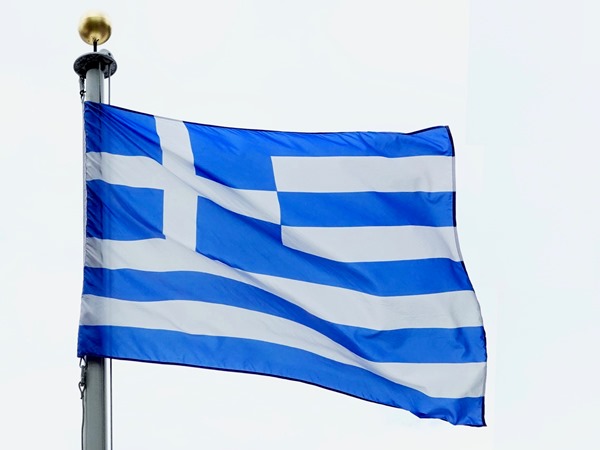
Not too surprisingly, Greece’s flag is popularly referred to as “the blue and white one”. The nine stripes are said to represent the word “freedom”, while the cross symbolises eastern orthodox Christianity.

Earlier on this webpage, I asked whether “any building anywhere [is] more representative of its country than the Colosseum is of Italy?” I think the answer is “Yes.” Not only is the Parthenon roughly 500 years older than the Colosseum, but I think that it’s also even more representative of Greece than the Colosseum is of Italy.

I’ve been to Greece twice – first in 1963 and then in 2001. My good friend, David Novitz, took this picture of me trying to comprehend the Greek alphabet when were in Thessaloniki (the second largest city in Greece) in August 2001 to attend David’s daughter Tonia’s wedding.
*******************************
VATICAN CITY
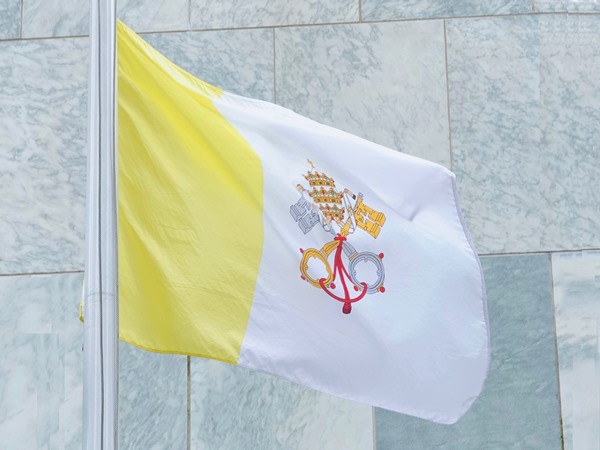
The flag of the Vatican City displays the crossed keys of Saint Peter.

The Vatican City is home to possibly the best known church in the world, St Peter’s Basilica. Built between 1506 and 1626, one of its main architects was Michelangelo.
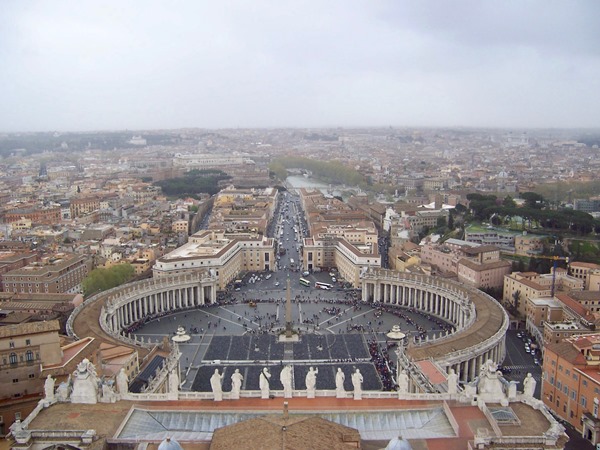
I don’t have a picture of me that was taken in the Vatican City, but I do have this photograph that I took in 2006 looking down onto the Piazza San Pietro (which is within the boundaries of the Vatican City), and across to the Tiber river and Rome.
*******************************
MONACO
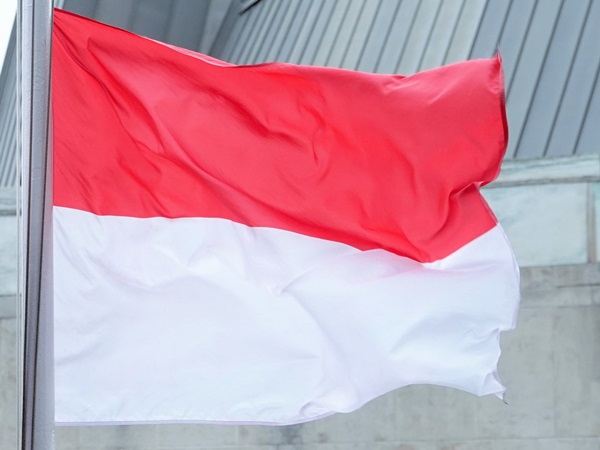
The Monaco flag is almost identical to Indonesia’s flag. Both consist of two horizontal stripes – red on the top and white below. The flags’ dimensions differ, however. While the height-to-width ratio of Indonesia’s flag is 2:3, the height-to-width ratio of Monaco’s is 4:5 (which is why, in this photograph that I took of Monaco’s flag at the United Nations in 2023, the flag almost appears to be square).

Monaco is a small, rich coastal enclave totally surrounded by the French Riviera, and measured by GDP per capita, it’s the richest country in the world. You can almost feel the wealth in this photograph that I took looking over the city and its harbour.

I have been to Monaco twice – first in 1963, and then in 2017. I don’t have either passport stamps or photographs of me in Monaco, but I do have a photograph that I took in 1963 of my grandmother’s Heinkel bubble-car alongside Bill, Dave, and Gary’s Citroen deux-Chevaux in Monaco.
*******************************
ANDORRA
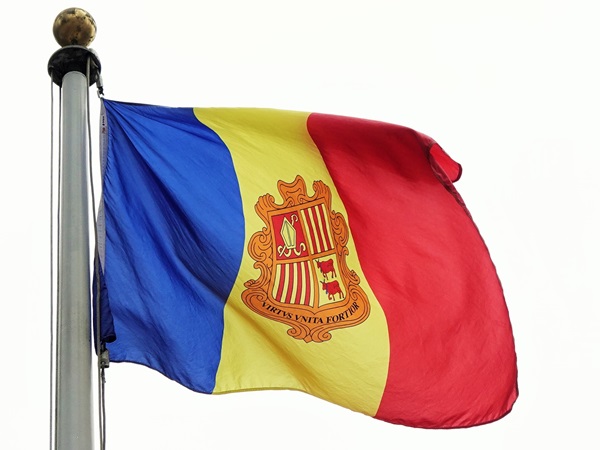
Andorra, Chad, Moldova, and Romania all have very similar flags, but the coat of arms in the centre of Andorra’s flag does help to distinguish it … a bit.

The only photograph that I took when we drove through Andorra on 7 October 1963 was of Bill, Gary, and Dave having a snowball fight after we’d encountered a tiny bit of snow next to the road. In all, Bill, Dave, Gary, and I spent three-and-a-half hours in Andorra, which I described in my diary as a “Spanish-flavoured Switzerland.”

I didn’t get an Andorran stamp in my passport, but I did get a stamp when I left France at the Pas de la Casa entrance to Andorra (which is shown on the left in this composite photo) and I did get a stamp in my passport when I entered (entrada) Spain at the Farga del Moles border post.
*******************************
SPAIN

The legal framework and specifications for the national flag of Spain are contained in the country’s 1978 constitution, but the flag’s origins date back to a naval ensign chosen by King Carlos III in 1785.

What could be more Spanish than a bullfight? I took this photograph in Madrid on 13 October 1963.

My first visit to Spain in 1963 lasted little more than a week. However, Heather and I spent almost two months in Spain in 2010, which included walking two-thirds of the main Camino de Santiago (i.e., the camino frances). Peggy Wall and Bob Slyker joined us for the last 134 kilometres of the walk, and this is a photograph that was taken of the four of us after we had arrived at the cathedral in Santiago de Compostela. I first met Peggy when she and I were seniors at the Theodore Roosevelt High School in Kent, Ohio, in 1962-63.
*******************************
AUSTRALIA

Even though it’s not what they represent, it’s always easy to remember how many stars are on the Australian flag – six, which is also the number of states in the Commonwealth of Australia (i.e., the Australian federation).

I had several candidates for a photograph I’d personally taken that would instantly say “Australia”. Should I show a kangaroo, for example, or the Sydney opera house? In the end I opted for a picture of Uluru (formerly known as Ayres Rock).

In January 1964 I migrated to Australia as a “ten pound Pom”, and lived there for three years. Most important of all, Australia is where I met and married Heather. On the left in this wedding photograph of us are Heather’s parents, Richard and Bronwen Meredith; my parents, Bobby and Lilian Roberts, are on the right.
*******************************
PHILIPPINES
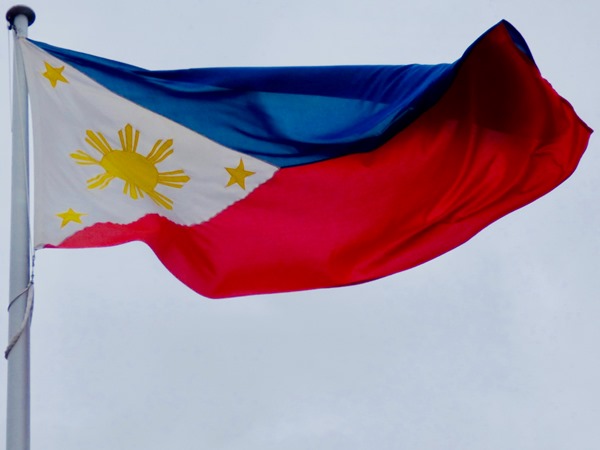
The three stars on the Philippines’ flag represent the country’s three largest islands, Luzon, Mindanao, and Visayas.

When I went to the Philippines in mid-1966, Ferdinand Marcos had been president for only six months. Little did I (or the rest of the world) know then that he would become a “dictator and kleptocrat” and stay in office for another 20 years. His son – Ferdinand Marcos Junior or Bongbong Marcos – was elected president of the Philippines in mid-2022.

I went to the Philippines in 1966 when I was part of a three-member university student delegation representing Australia at an international conference. This is a photograph of me speaking during one of the conference sessions. Another member of the Australian delegation, Peter Christiansen, is second from the left in this picture.
*******************************
INDONESIA

Many countries have predominantly red and white striped flags. In alphabetic order they include Austria, Canada, Greenland, Indonesia, Latvia, Lebanon, Malta, Monaco, Peru, Poland, and Singapore. No two of these are more alike than the flags of Indonesia and Monaco: each simply consists of two horizontal stripes – red on the top and white below. Their dimensions differ, however. The height-to-width ratio of Indonesia’s flag is 2:3; Monaco’s is 4:5.

I went to Indonesia in June 1966 as part of a two-person university student delegation from Australia trying to establish contact with students after the army’s violent suppression of dissent the previous year. We went only to Jakarta, the country’s capital city, and had little time to go sightseeing. However, I was able to take this photograph of the 132 metre-high national monument of the Republic of Indonesia, built to commemorate the country’s struggle for independence.

I don’t have a picture of me in Indonesia, but my passport has both my visa for Indonesia, as well as stamps showing that I entered the country on 13 June 1966 and left four days later.
*******************************
ADEN; now YEMEN
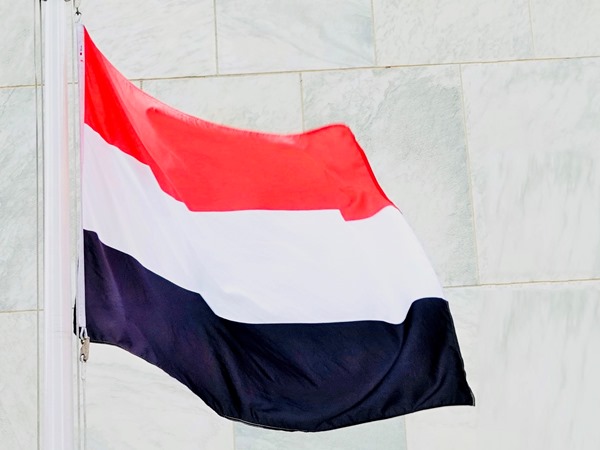
This is the flag that was adopted when South Yemen (which included the city of Aden) and North Yemen united in 1990.

The ship that Heather and I sailed on from Australia to Europe in February 1967 called in at Aden. Four years earlier the port had ceased to be a British colony, but its large natural harbour in the crater of a dormant volcano near the entrance to the Red Sea meant that Aden was still strategically significant.

I have neither a passport stamp nor a photograph of either Heather or me in Aden, but I do have this aerogramme from my father which was addressed to us and which we received in Aden. (The letter contained a detailed description of how my parents’ house had burnt down in Tasmania’s 7 February 1967 ‘Black Tuesday’ bushfires).
*******************************
SCOTLAND
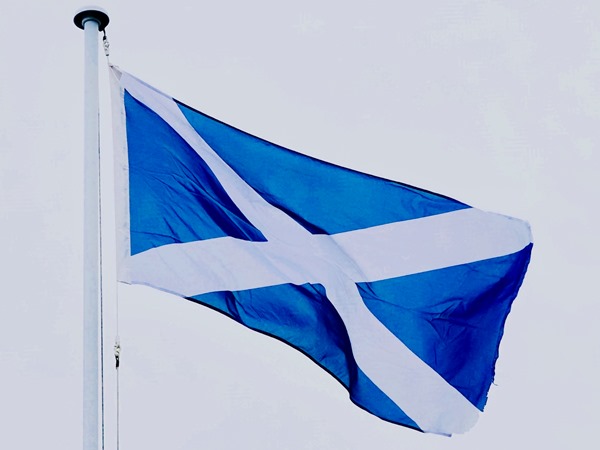
Saint Andrew’s white diagonal cross (or saltire) on a blue background is not only the basis for Scotland’s flag, but it also forms part of the flag of the United Kingdom.

While Heather and I were living in England from 1967 to 1969, we holidayed in Scotland in April 1968. It was my first time there, but I’ve since been back three times (in 1976, 1998, and 2012). I visited Edinburgh, the country’s capital city, on all four occasions, and in 2012 took this photograph of Edinburgh’s famous castle, dramatically perched on top of the cliffs of an ancient volcanic plug.

In 1998 I met a climbing friend, Phil Harmston, in Glasgow, and we climbed the Cobbler, an 884 metre- / 2,900 foot-high peak in the West Highlands of Scotland. My camera’s auto-focus couldn’t cope with the conditions we encountered near the summit, so this picture of Phil (on the left) and me rather nicely underscores the fact that we were literally in a Scotch mist.
*******************************
DENMARK

Denmark’s flag has a simple but striking design: a white Nordic cross on a red background. According to the Guinness Book of Records, it’s the world’s oldest continuously used national flag.

The Little Mermaid sculpture in Copenhagen harbour was unveiled more than a hundred years ago, and was inspired by a famous fairy tale by Hans Christian Andersen.

Heather and I first went to Denmark in 1969. Since then, we’ve both been there many times, not least because the University of Aarhus was the base for most of the periods of sabbatical leave that I had during my career as a university lecturer. This photograph was taken in Augustenborg in southern Jutland in 2012, when Heather and I visited Aase Møller-Hansen and her husband, Wilford. Aase and I first met in 1962 when we were AFS students in Ohio.
*******************************
SWEDEN

Blue and yellow / gold have long been traditional Swedish colours, and the design of the Swedish flag is thought to have been inspired by the Danish flag.

The Stockholm city hall has been described as “one of the main attractions of Stockholm, and even a symbol of Sweden.” Built between 1911 and 1923, it is lauded as an example of art nouveau architecture.

Heather and I visited Sweden twice in 1969 – but we simply drove up and then, later, down the country’s west coast while travelling between Denmark and Norway. Since then, however, I’ve often been to Sweden to study aspects of its politics and especially its elections. This photograph was taken on election day 2006 when I caught up with Carina Persson (whom we first met in New Zealand) and accompanied her to the polls.
*******************************
NORWAY

Norway’s flag is based on the Danish flag, marking the union of Norway with the Kingdom of Denmark from 1397 until 1814. The blue cross symbolises the union between Norway and Sweden that lasted from 1814 until 1905.

I took this photograph in the Viking Ship Museum in Bygdøy, Oslo, in 1976. Ever since the museum opened in 1926, it’s been regarded as a national symbol.

Heather and I first went to Norway in 1969, and I’ve been back frequently since then to study the government and politics of a country that’s been referred to as “the New Zealand of the North Atlantic”! In 1976, on my first research trip to Norway, I met Sigmund and Liv Mathiesen. Over the course of many years, they were exceptionally hospitable and helpful to me, and this photograph was taken in 1991 of me (wearing a t-shirt proclaiming NORGE NORWAY NORWEGEN) and Liv at their house near Oslo.
*******************************
EAST GERMANY
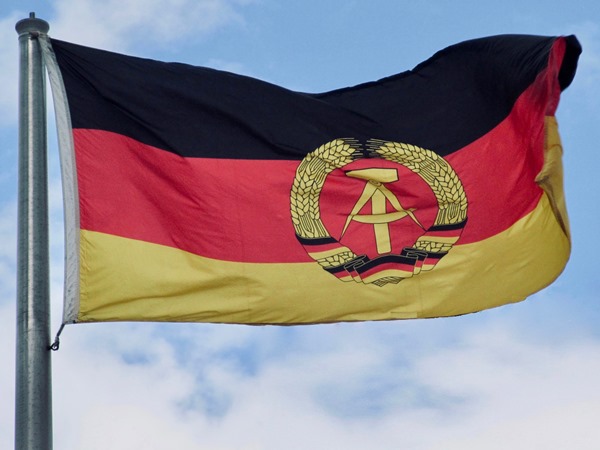
The East German flag had the same black, red, and yellow stripes as the West German (and now German) flag, but with the East German coat of arms – which featured a hammer, a compass, and a wreath of wheat – in the centre.

What could be more representative of Easy Germany than this photograph that I took of the Berlin wall with rows of tank traps behind it?

In October 1969, Heather and I drove through East Germany twice; the first time was while we were on our way from Hamburg to West Berlin, and the second time was when we drove from West Berlin to Nuremburg. In addition, while we were staying in West Berlin, we crossed over into and spent a day in East Berlin. I don’t have any photos of either Heather or me in East Germany, and (because my passport was stolen six years later) I can’t show the East German stamps that were in it. However, I do have this photograph that I took in East Berlin of the Brandenburg Gate. The fixtures in the middle of the gate were there because East Germany was celebrating the 20th anniversary of the founding of the DDR – namely, the Deutsche Demokratische Republik (i.e., the German Democratic Republic or East Germany) – which was formally proclaimed as a country on 7 October 1949, precisely 20 years and 3 days before I took this picture.
*******************************
CZECHOSLOVAKIA
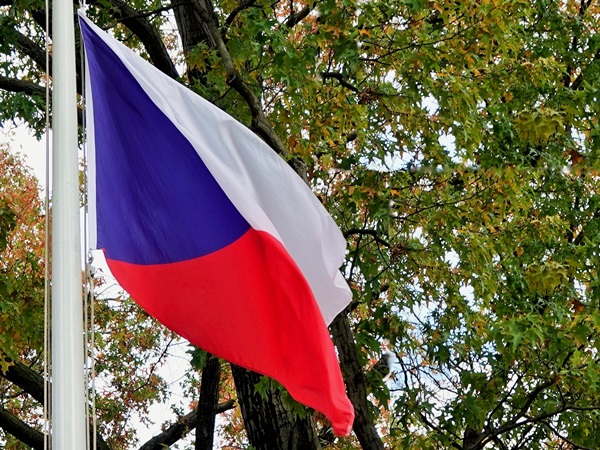
Although Czechoslovakia no longer exists (created in 1918, the country split at the end of 1992 into the Czech Republic and Slovakia), its flag still exists because the flag of Czechoslovakia is the same as the current flag of the Czech Republic (and that made my task of photographing the Czechoslovakian flag much easier than it might otherwise have been).

This photograph that I took of the Vltava river, the Charles bridge, and the Hradcany castle in Prague in October 1969 is one of my favourite photographs. I think it’s truly atmospheric.
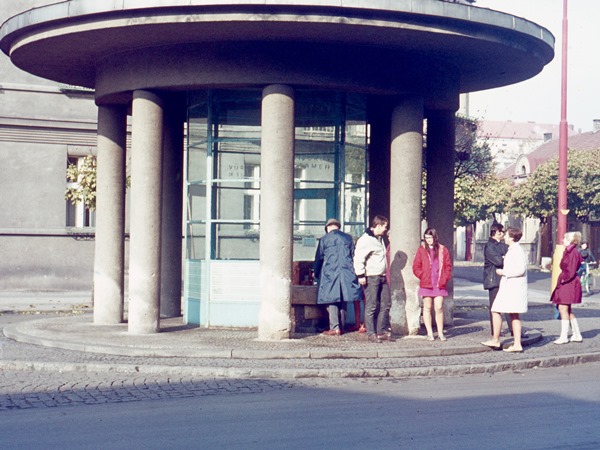
There are no photographs of me in Czechoslovakia, and my passport with Czechoslovakian stamps in it was stolen. However, I do have this photograph that I took of Heather (dressed in red in the centre of the picture) and our hosts in Czechoslovakia – final-year medical students, Ivan Julis (second from the left) and Dana (second from the right) – waiting to sample mineral water from a spring in Podebrady, a small spa town roughly 60 kilometres east of Prague.
*******************************
NEW ZEALAND

The New Zealand flag is similar to the Australian flag, except for the facts that the New Zealand flag has only four stars (not six) and that the stars on the New Zealand flag are red and white (whereas the stars on the Australian flag are simply white). An opportunity to change the flag was lost in 2016 when only 43 per cent of voters in a binding referendum supported an alternative flag.

Kiwis are unique to New Zealand. They are an iconic emblem of the country, so much so that New Zealanders proudly refer to themselves as Kiwis. However, most Kiwis have never seen a kiwi in the wild: they are both nocturnal and rare. As a result, I was thrilled to take this photograph of a kiwi at dawn on Stewart Island (New Zealand’s third-largest island) in April 2019.

Heather and I arrived in New Zealand on 5 January 1970, and ever since have called the country home. This photograph was taken a couple of days after Evan – the first true Kiwi in our family – was born in Christchurch in 1975. I became a New Zealand citizen in 1977, while Heather (who has retained her Australian citizenship) is a permanent resident of New Zealand.
*******************************
COOK ISLANDS

The 15 stars on the Cook Islands’ flag represent the 15 islands that together constitute the country.

Many people visit the Cook Islands in order to have a tropical South Seas holiday, and that’s what Heather, Evan, and I did when we spent a week on Rarotonga (the largest of the Cook Islands’ 15 islands) in May 1976 at the start of my first sabbatical leave.
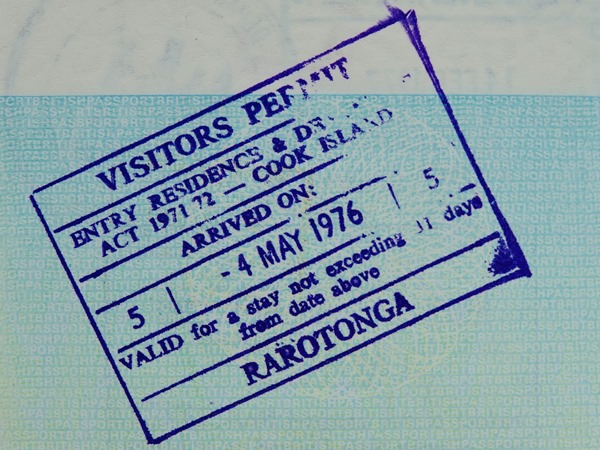
No photographs were taken of me when Heather, Evan, and I were in the Cook Islands. However, after leaving New Zealand on Wednesday, 5 May 1976, we flew east, crossed the International Date Line, and arrived in Rarotonga on Tuesday, 4 May 1976, when my passport was stamped “valid for a stay not exceeding 31 days”.
*******************************
WALES

The flag of Wales is both attractive and striking, but not an especially easy one to draw. The red dragon has been used as an emblem of Wales for about 1,500 years, but this flag was only officially recognised as Wales’ national flag in 1959.
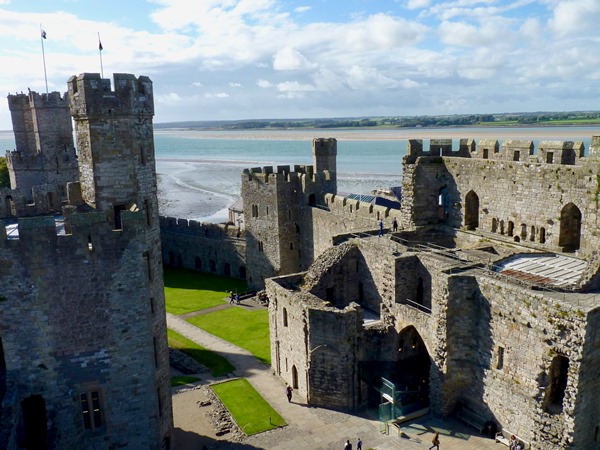
Caernarfon Castle is said to be recognised around the world as “one of the greatest buildings of the Middle Ages”, and is where Charles III – the current King of the United Kingdom of Great Britain and Northern Ireland – was formally invested as Prince of Wales in 1969.

Heather, Evan, and I first visited the Land of [Our] Fathers – to quote the title of the unofficial Welsh national anthem – in 1976. In my case, Wales is the land of my mother: she was born in Machynlleth, but her family didn’t stay in Wales at all long. However, Heather and Evan have much deeper ties to Wales: Heather’s grandfather and Evan’s great-grandfather, Evan Williams, was born in Wales, where he grew up and trained as a teacher before emigrating to Tasmania prior to the First World War. I visited Wales a couple of times in 2012, and in 2015 Heather and I spent a month in Wales, where this photograph was taken when we visited Heather’s relatives on the Llyn Peninsula.
*******************************
ANTARCTICA

There isn’t an official Antarctic flag, but this photograph (which I took in Antarctica in 1979-80) shows the flags of the Antarctic Treaty partners. They’re in alphabetic order, starting on the far side of the semi-circle with the flags of Argentina, Australia, and Belgium, and continuing round to the flags that are closest to the camera – namely, the flags of South Africa, the Soviet Union, the United Kingdom, and the United States. Underscoring the historic nature of this picture, the South African and the USSR flags are no longer in use.

Emperor penguins are unique to Antarctica. I took this photograph on Ross Island in December 1979.

Very few people get to Antarctica; and very few of those who do get to go to South Pole. I was exceptionally fortunate in being able to visit the South Pole in early February 1980. The temperature when this picture was taken of me was -40 degrees C, which is where the Celsius and Fahrenheit scales meet and it was thus also -40 degrees F.
*******************************
FINLAND

Finland’s flag features a blue Nordic cross on a white background. Of the half-dozen countries with a solely blue-and-white flag, Finland’s flag is probably the simplest of all.

This photograph that I took in Helsinki, Finland’s capital city, in September 1985 probably won’t scream “Finland” at you until you’re told that it’s a memorial to Jean Sibelius, who’s widely regarded as Finland’s greatest composer. The stirring music, Finlandia, is possibly his best-known work.

During a five-day visit to Finland in September 1985, I travelled from Helsinki to Rovaniemi, where for the first time in my life I crossed the Arctic Circle – wearing, incidentally, the same jumper that I’d worn both to the South Pole and to the top of Mt Kilimanjaro.
*******************************
KENYA

The Kenyan flag – like the flag of Swaziland / Eswatini – features a traditional shield and weaponry in the middle of five stripes. Kenya’s flag, though, is five years older than the Swazi flag (because both flags were adopted when their countries achieved independence – which was 1963 in the case of Kenya, but only 1968 in Swaziland’s case).

Kenya, the country, is named after Kenya, the mountain, which the Kikuyu who live around it call “Kirinyaga” or “Kerenyaga”, meaning mountain of whiteness, because of its snow-capped peaks. Mt Kenya is the second highest mountain in Africa, and I took this picture of three of its peaks – from left to right, Batian (5,199 m / 17,057 ft), Nelion (5,188 m / 17,021 ft), and (nearest the camera) Point John (4,883 m / 16,020 ft) – in August 1998.

I’ve been to Kenya twice – briefly in 1985, and then for two weeks in 1998. This is a photograph that was taken on 28 August 1998 of me, Anderson Mwenda, and John Train, on the summit of Lenana (4,985 m / 16,354 ft), the third highest of Mt Kenya’s peaks. Two days later, John and I unsuccessfully attempted to climb Batian and Nelion, the highest and second-highest of the mountain’s peaks. As a result, despite the fact I’ve climbed Lenana, Mt Kenya is on the list of significant mountains that I’ve not climbed.
*******************************
CANADA

In late 1964, Canada’s federal parliament chose a new flag for the country. This simple but striking design soon became one of the world’s most easily and widely recognised flags.

The Niagara Falls are an iconic symbol of Canada. Measured by their flow rate, the Horseshoe Falls – seen in this photograph that I took on Canada’s Victoria Day national holiday in May 1988 – are the most powerful waterfall in North America.

Although I’d been to North America in 1962-63, 1976, and 1985, it was only in 1988 – on my fourth visit to the continent – that I finally got to go to Canada. Since then, though, I’m pleased to say that I’ve been back to Canada on six occasions. This photograph was taken of me in front of the Niagara Falls on 23 May 1988.
*******************************
NEPAL

The Nepalese flag is the only national flag in the world that isn’t either a rectangle or a square. The upper triangle of Nepal’s flag features a stylised moon, while the larger lower triangle depicts a twelve-pointed sun.

Mt Everest – 8, 848 m / 29,031 ft, the highest mountain in the world – is on the Nepal-China border. The mountain is also known as Sagarmatha in Nepal and Chomolungma in China. The first successful ascent was in May 1953 by Edmund Hillary and Tenzing Norgay, who were part of the 1953 British Everest Expedition that tackled the peak from the southern – i.e., from the Nepalese – side. I took this photograph of Mt Everest on 18 October 1991.
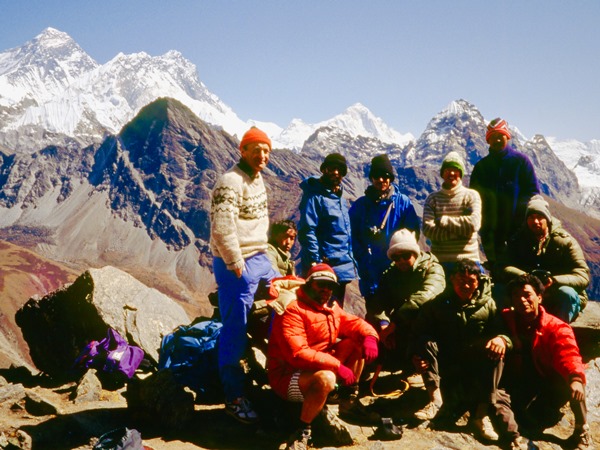
This photograph by Diane Cowan was taken on 18 October 1991 on the summit of Gokyo Ri, also known as Gokyo Peak (5,360 m / 17,585 ft). Mt Everest can be seen near the left-hand edge of the picture. From left to right, the people in the front row (who are all seated) are Jon Guyver, Rod Rutledge, Ang Pasang, and Assistant Sherpa Rinzing. In the back row, from left to right, are Eric Hodge, an assistant cook, Dave Little, Ralph Baulis, me, Tarchen, and Geoff Seawright.
*******************************
INDIA

The Indian flag has three horizontal stripes and a 24-spoked chakra (i.e., wheel) in the middle of its central white stripe. This has been India’s official flag ever since the country gained its independence from Britain in 1947.

The Taj Mahal, almost certainly the most famous building in India (and possibly even in the world), is in Agra (which is in the Indian state of Uttar Pradesh). It was built in the mid-17th century as a mausoleum to house the tomb of one of the wives of Shah Jahan, the fifth Mughal emperor.

After a difficult, strenuous, and tiring climbing expedition in Nepal, I spent four days in India in November 1991, and – of course – I had to visit the Taj Mahal, where this photograph of a rather emaciated me was taken.
*******************************
FIJI

Despite the fact that Fiji not only became an independent nation in 1970 but later – after a couple of coups d’etat in 1987 – also deposed Queen Elizabeth II as its head of state and became a republic, the country’s flag has remained largely unchanged since colonial times.

Kava is Fiji’s national drink. It is mildly narcotic and is made from crushed yaqona roots strained with water. The presentation and drinking of kava are symbols of the respect and reverence given to guests. At a kava ceremony, guests sit in a circle and take turns in sipping kava from a communal bowl. I took this photograph at a kava ceremony I attended in 1997 in an isolated rural settlement on the island of Viti Levu.

I first went to Fiji in 1994 when I was invited to an electoral systems’ conference. Since then, I’ve been back to Fiji four times – in 1995, 1997, 1999, and 2002. This photograph was taken of some of the participants at an electoral systems’ workshop that I attended in May 1999 in Suva, the country’s capital city.
*******************************
RUSSIA

After the dissolution of the Soviet Union in 1991, Russia adopted a new flag that was “similar to the pre-revolutionary tricolour that had been abolished in 1917.”

Saint Basil's Cathedral in Moscow (situated in Red Square, opposite the Kremlin) is one of the most popular cultural symbols of Russia. The cathedral’s onion dome roofs represent Christ and the four evangelists (i.e., Matthew, Mark, Luke, and John).

I went to Russia in August 1994 as part of an expedition to climb Mt Elbrus (5,642 m / 18,510 ft). It’s in the Caucasus mountains in southern Russia, and is the highest mountain in Europe. This photograph of our climbing party was taken on 12 August 1994. From left to right are Barry Deren, Steven Smith, Jim Smith, me, Peggy McKay, and Greg Matte.
*******************************
ARGENTINA

Argentina’s flag has three equal-sized horizontal stripes – light blue, white, and light blue – and a golden sun in the middle.

This is a photograph that I took of a plaque on Eva Peron’s mausoleum in La Recoleta cemetery in Buenos Aires, the capital of Argentina. She was the First Lady of Argentina from June 1946 until her death on 26 July 1952, and is known in popular culture throughout the world as a result of the musical Evita in which the spirit of the dead Eva Peron sings “Don’t Cry for Me, Argentina”.

This photograph was taken of me on 31 December 1994 on the literal highpoint of my life after I had reached the summit of Aconcagua, 6,962 m / 22,841 ft. It’s the highest mountain in Argentina, the highest mountain in South America, and the highest mountain in the world outside Asia. I know that I’ll never go higher than this in my life.
*******************************
TONGA

This simple but striking design has been the national flag of Tonga since 1875. Under the terms of the Tongan constitution, the flag can “never be altered”; it “shall always be the flag” of Tonga.
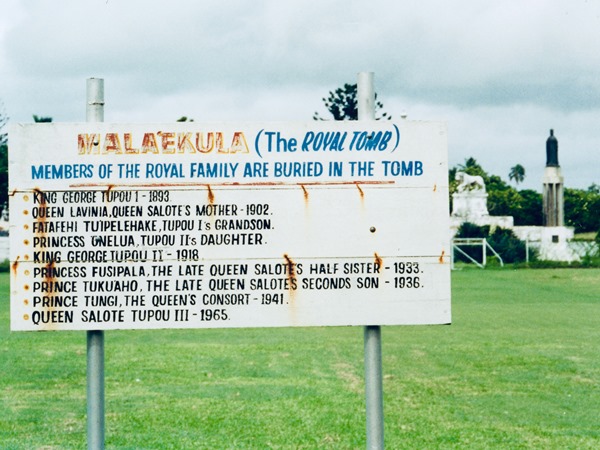
Tonga became a constitutional monarchy in 1875 and is the only sovereign indigenous monarchy in Oceania. As a result, these royal tombs are uniquely Tongan.
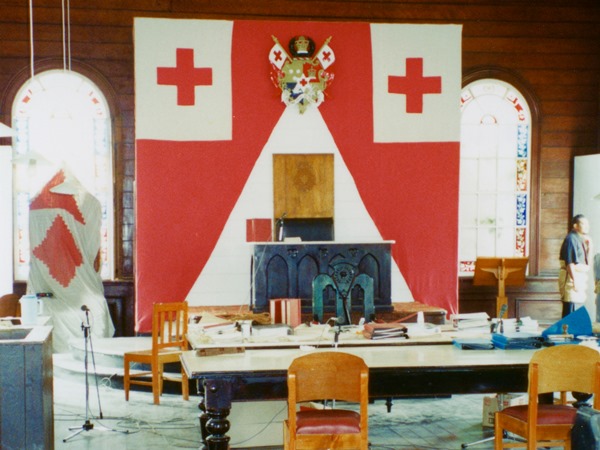
I have been to Tonga twice: in 1995 and in 1997. I don’t have any photographs of me there, or stamps in my passport, so I thought that I’d instead include this photograph that I took of the interior of Tonga’s tiny parliament. It has only 26 members: 17 commoners and nine members elected by the country’s 33 hereditary nobles.
*******************************
VANUATU

A little bit like (though somewhat simpler than) the South African flag, the design on the Vanuatu flag is Y-shaped (albeit sideways) partly to reflect the shape on a map of the islands that constitute the country. The symbol in the black triangle (which isn’t very clear in my photo) is a boar’s tusk encircling cycad fronds.

I’ve chosen this photograph that I took of a banner in the national museum because it underscores the fact that Vanuatu had an unusual colonial past. It was jointly administered by the United Kingdom and France, and from 1906 until 1980 it was formally known as the New Hebrides Condominium / Condominium des Nouvelles-Hébrides. Many colonists, though, jokingly referred to it as the New Hebrides Pandemonium, not least because of the duplication of services.

I have been to Vanuatu three times: in 1995, 1997, and 2004. The last time I was there was to attend an academic conference at which my close friend and colleague Stephen Levine and I gave a paper about “The Constitutional Structures and Electoral Systems of Pacific Island States.”
*******************************
NEW CALEDONIA
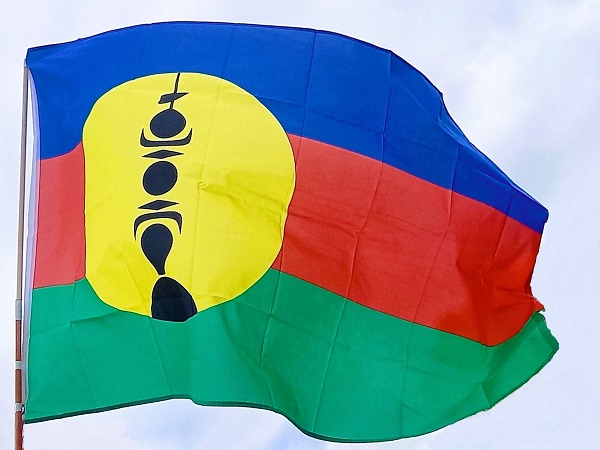
This flag is known as the Kanak flag. Despite the fact that it’s flown together with the French flag in New Caledonia, it doesn’t have official status. That’s something that the pro-independence parties in New Caledonia would like to change. The yellow circle in the middle of the flag portrays an indigenous Kanak rooftop spear.

Nickel mining is an important part of the New Caledonian economy, and this is a photograph that I took of a large nickel smelting plant near Noumea, the country’s capital city.

I have been to New Caledonia twice – first in 1995, and then again in 1997 when Heather took this photograph of me enjoying a mid-morning cup of coffee in Noumea.
*******************************
PORTUGAL

Green and red are the two main colours on the Portuguese flag that was adopted after the abolition of the monarchy in 1910 because they were the colours of the country’s republican party. The coat of arms on the flag recalls the defeat roughly 900 years ago of five Moorish kings and the recapture of seven Moorish castles.

Porto is the second largest city in Portugal. Situated on the banks of the Douro river near the Atlantic Ocean, it’s a UNESCO World Heritage site. This is a photograph I took in 2017 of the Dom Luis I bridge, which was designed by one of Gustave Eiffel’s students, was completed in 1886, and is one of the best-known landmarks in Portugal.

I have been to Portugal three times: in 1998, 2009, and 2017. My first visit was a really sad occasion. My niece, Tania, and I flew into Faro on 12 November, the day after Anthony – Tania’s father and my brother – had died. Six days later this photograph was taken of me next to Anthony’s grave in the Mexilhoeira Grande village cemetery.
*******************************
HONG KONG

The Hong Kong flag depicts a five-petal orchid tree flower. It was officially used for the first time on 1 July 1997 when Hong Kong ceased to be a British colony and became a special administrative region of China.

This is a photograph that I took in October 2000 on my only visit to Hong Kong. It looks down from the side of Victoria Peak onto an array of Hong Kong’s harbour-side skyscrapers.

I went to Hong Kong to take part in an conference examining a range of possibilities for the development of Hong Kong’s voting system (and while there was privileged to stay with friends, the New Zealand Consul-General and his spouse, in their official residence). I’ve no photos of me in Hong Kong, but my passport shows I entered the country on 19 October 2000 and left a week later.
*******************************
SINGAPORE
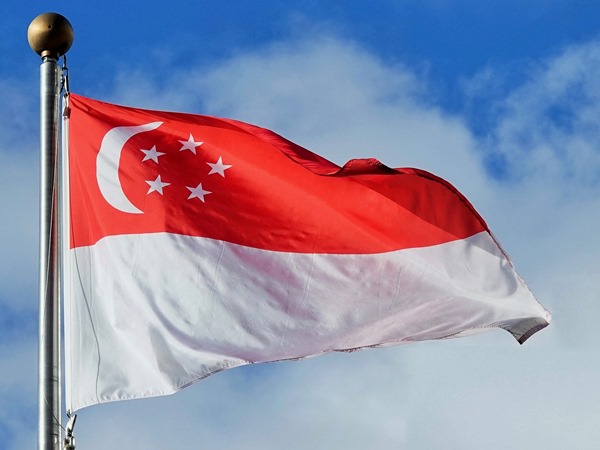
The Singapore flag – equal-sized red and white stripes, plus a white crescent moon and a circle of five white stars – was adopted as the country’s flag in 1959 when Singapore became a self-governing British colony. Singapore became part of Malaysia in 1963, but left the federation two years later and this flag thus became the newly independent island state’s official flag.

Singapore has a stunning array of modern architectural wonders. I took this photograph in April 2006 of the city-state’s premier performing arts centre. Not surprisingly, the building’s been been nicknamed “the Durian building” because of its resemblance to the spiky tropical fruit that’s famous for its strong (many think it repulsive) smell.

On my first visit to Singapore – in December 2000 – I simply couldn’t resist going to the Raffles Hotel and having (and, of course, enjoying) a Singapore sling (which is a gin-based cocktail first concocted more than a hundred years ago by a Raffles bar-tender).
*******************************
VIETNAM
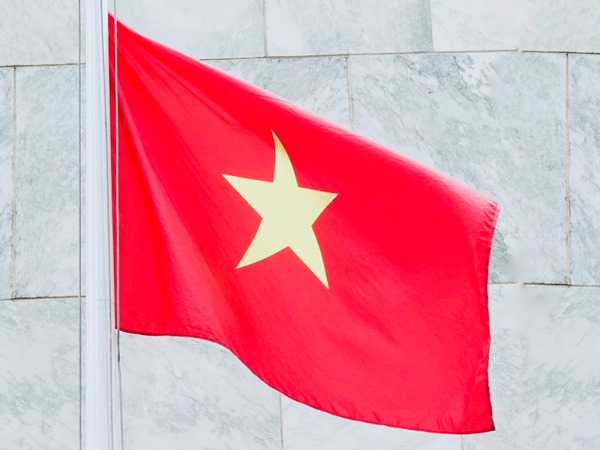
The flag of Vietnam was initially the flag of the Viet Minh, the organisation that fought the Japanese and, later, the French. It became the North Vietnamese flag in 1954, and then the flag of the whole country – i.e., the reunified Vietnam – after the defeat of South Vietnam in 1975.

Looking for just one photograph that I’d taken that would sum up Vietnam, I opted for this picture (which I took in Hue in June 2001) of a large billboard. With the Communist hammer and sickle, the country’s five-pointed yellow star, and Ho Chi Minh at the top, and the slogan at the bottom which (very roughly speaking) is about wisdom guiding the nation in the world, this photograph couldn’t have been taken anywhere other than in Vietnam.
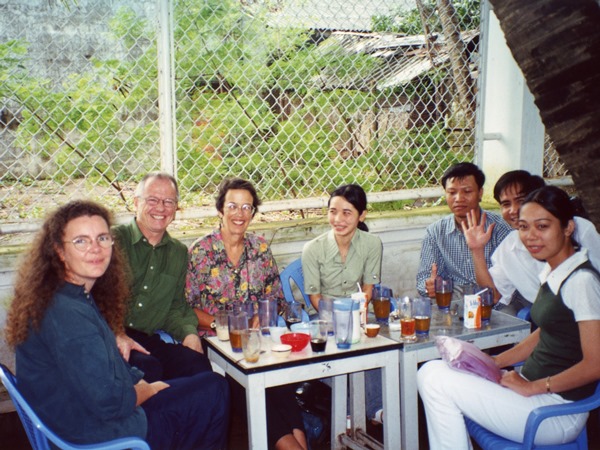
Heather worked in Vietnam for three-and-a-half years, and I visited her there on four occasions: in 2000, 2001, 2002, and 2003. This photograph was taken in Quy Nhon in December 2000, when I visited Heather for the first time. Heather is third from the left and I’m next to her, and we’re at a small café surrounded by some of Heather’s work colleagues and friends.
*******************************
THAILAND

The blue horizontal stripe in Thailand’s flag is twice the width of the other four stripes, which means that each of the three colours – red, white, and blue – occupies the same amount of space on the flag.
 My visit to Thailand in June 2001 did not go as planned. My plane landed in Bangkok much later than scheduled. As a result, I arrived at my hotel in the early morning and had to leave only a few hours later to return to the airport. The only hurried and sleep-deprived photograph I took while I was actually in Thailand was of my hotel room, so for this webpage I’ve decided to use a photograph I took of a Thai Airways plane. It’s far more recognisably Thai than was my hotel bedroom! My visit to Thailand in June 2001 did not go as planned. My plane landed in Bangkok much later than scheduled. As a result, I arrived at my hotel in the early morning and had to leave only a few hours later to return to the airport. The only hurried and sleep-deprived photograph I took while I was actually in Thailand was of my hotel room, so for this webpage I’ve decided to use a photograph I took of a Thai Airways plane. It’s far more recognisably Thai than was my hotel bedroom!

These stamps in my passport summarise the sad story of my stay in Thailand. I was admitted to Thailand on 3 June 2001 and I left Thailand on 3 June 2001.
*******************************
CAMBODIA

The Cambodian flag depicts Angkor Wat – a proud symbol of the country’s ancient heritage – in the middle of the flag’s central red band.

I took this photograph of Angkor Wat on 1 January 2002. It’s a Hindu temple in north-west Cambodia that was built in the 12th century and has been described as the largest religious structure in the world. Angkor Wat is truly one of the wonders of the world.

While we were in Siem Reap, the city that’s close to Angkor Wat, both Heather and I donated blood at a charity hospital, and Heather took this photograph of me doing so.
*******************************
SAMOA

This has been the Samoa’s national flag since 1949. The blue rectangle on the flag depicts the southern cross. Article 5 of the Official Flag and National Anthem of Samoa Act of 1994 says that “The driver of a vehicle that is within a public place or an area where the flag is being raised or lowered shall refrain from driving the vehicle and ensure that the vehicle remains motionless until the raising and lowering of the flag is completed.”
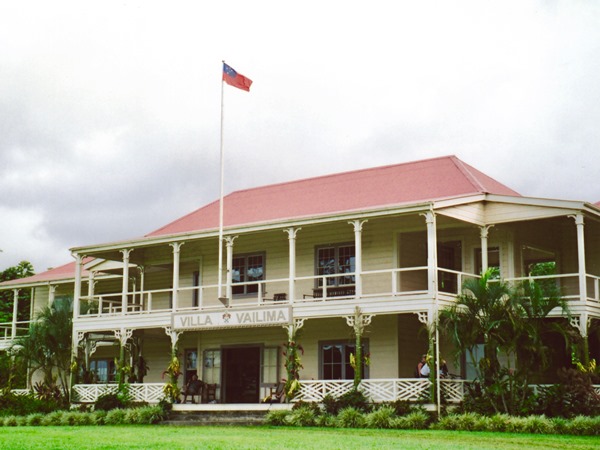
I have only been to Samoa once, in February 2002, when I took this photograph of Villa Vailima, one of the best known buildings in the country. It was built in the early 1890s by Robert Louis Stevenson, who spent his last years of his life there. The house then became the residence of the Governor of German Samoa and later became the seat of the New Zealand Mandate Administration and Head of State of Samoa. The Robert Louis Stevenson museum was opened in Villa Vailima in December 1994 on the 100th anniversary of Stevenson’s death.

I don’t have either a photo of me in Samoa or a stamp in my passport, but I deliberately kept the label of a genuinely Samoan beer that I consumed in country’s capital city, Apia.
*******************************
AMERICAN SAMOA

The bald eagle in the white triangle on the flag of American Samoa is holding a war club and a traditional fly-whisk.

In 1899, the Samoan islands were divided between Germany (which took the larger western islands) and the United States (which claimed the eastern island group). America then set up a naval base in Pago Pago, one of the deepest natural harbours in the South Pacific. I took this photograph of the stunning south seas port in February 2002 on my only visit to American Samoa.

Three political science professors photographed in February 2002 on the floor of the American Samoa senate, together with the president of the senate. From left to right, Nigel Roberts, Lutu Tenari Fuimaono, Stephen Levine, and Jørgen Elklit.
*******************************
FRENCH POLYNESIA

The flag of French Polynesia features a stylised representation of the sun, the sea, and an outrigger canoe. It’s appropriate, therefore, that the background to the flag in this photograph that I took is not sky, but sea.

I took this photograph of Bora Bora in the evening after spending a day on the island. Although James Michener famously called Bora Bora “the most beautiful island in the world,” I thought that Moorea was even more beautiful.

Politics professors in paradise! This photograph was taken in February 2002 when Jørgen Elklit and I went to Moorea while I was on the only visit I’ve made to French Polynesia.
*******************************
ICELAND
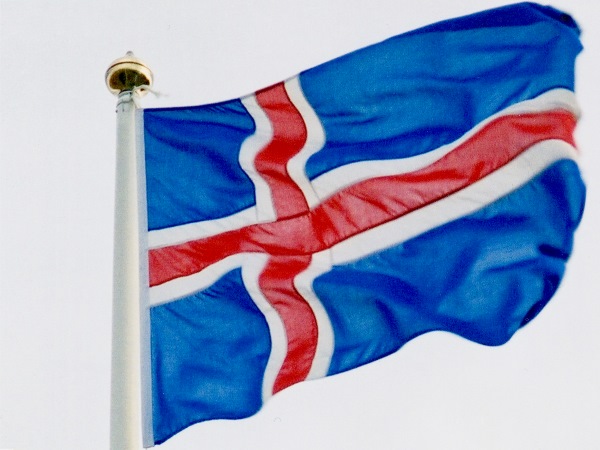
The flag of Iceland was officially described on 17 June 1944, the day Iceland broke away from Denmark and became a republic. The description of the flag was almost poetic: “The civil national flag of Icelanders is blue as the sky with a snow-white cross, and a fiery-red cross inside the white cross.”

Geysir is a famous hot spring in the Haukadalur valley in south-west Iceland – it’s so well-known, indeed, that Geysir gave its name to geysers all around the world, including New Zealand.

I went to Iceland in November 2002 primarily to visit the Icelandic parliament in Reykjavik. Importantly, though, I was also able to visit Thingvellir, which is where what is often described as the world's first parliament was established in 930 AD.
*******************************
MONGOLIA
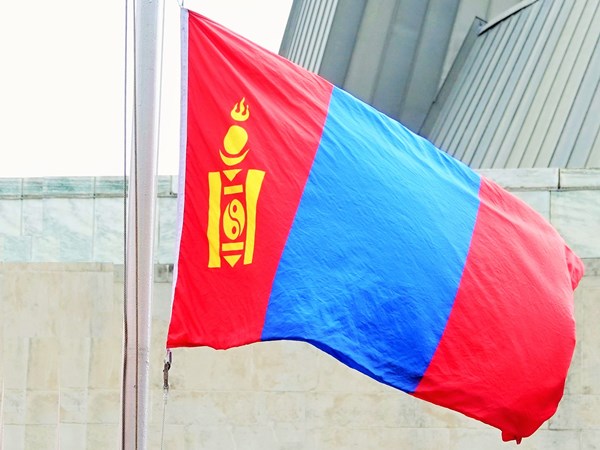
The symbol on the left-hand side of the Mongolian flag is a special character in the Soyombo alphabet, which was developed by a monk in the 17th century to write Mongolian.

National Geographic has said that “Yurts have been the primary style of home in central Asia, particularly Mongolia, for thousands of years.” I took this photograph of two yurts on a barren, windswept hillside near Ulaanbaatar, the capital city of Mongolia, in November 2005.

I’ve been to Mongolia once – for a week in November 2005 – to advise a committee of the Mongolian parliament (formally known as the State Great Hural) about options for electoral reform. This photograph was taken inside the parliament building and is of me literally to the right of Genghis Kahn.
*******************************
CHINA

Not surprisingly, the flag of China – or, to give the country its full name, the People’s Republic of China – is also known as the five-star red flag. It was adopted in time for the formal proclamation of the People’s Republic on 1 October 1949.

I spent only two nights and one full day in China in November 2005 on my first and only visit to the country. One of my priorities was to see the Great Wall of China, which I am pleased to say that I did and in excellent weather too.

This is a picture of me in front of the Tiananmen – or the Gate of Heaven-Sent Pacification (which is often also called the Gate of Heavenly Peace) – between the Forbidden City and Tiananmen Square in Beijing. Mao Zedong was chairman of the Chinese Communist Party from 1949 until his death in 1976, and his portrait is visible in the top left-hand corner of the photograph.
*******************************
IRELAND

The Irish flag was given to Thomas Francis Meagher in 1848 as a gift from French women sympathetic to Irish nationalism. The hoped-for union between Roman Catholics and Protestants was symbolised by the green and the orange respectively. After the flag was raised above Dublin’s post office during the Easter 1916 uprising, the Irish tricolour came to be regarded as the national flag.
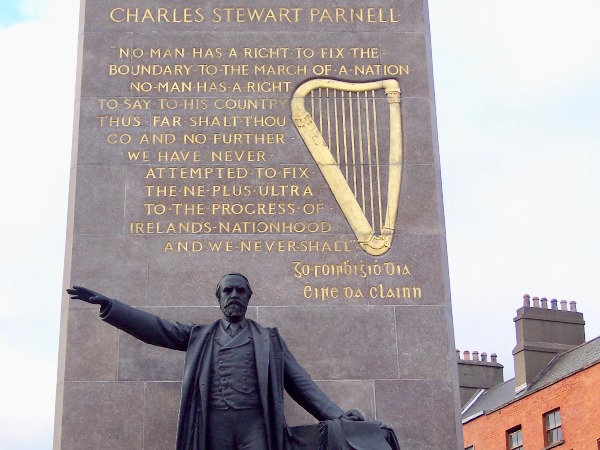
I took this photograph of the Parnell monument in Dublin in October 2006 because the history of Ireland is dominated by the country’s struggle for independence from Britain. Charles Stewart Parnell was first elected to the United Kingdom parliament in 1875, where he passionately promoted the idea of Home Rule for Ireland and came to be regarded as “one of the most formidable figures in parliamentary history.”

Despite the fact that my maternal grandmother was born in Ireland, I have only been there once. I went to Ireland in October 2006 to conduct research into aspects of the country’s single transferable voting (STV) electoral system. No photos were taken of me while I was there, and I don’t have any stamps in my passport. However, because (as mentioned on the homepage of my website) “the seahorse is something of an unofficial family symbol”, I have used this photograph instead. The seahorses on the Grattan Bridge over the Liffey river in Dublin certainly caught my eye.
*******************************
JAPAN

Japan’s flag is simple and striking. It reinforces the fact that the country is often referred to as the land of the rising sun.

I took this photograph in Tokyo in April 2009 of one of gates to the Imperial Palace. The current Emperor of Japan, Naruhito, is the grandson of former Emperor Hirohito, who was allowed to stay on what's called the Chrysanthemum Throne after World War II.

The only time I have been to Japan was in 2009. I went to Tokyo to give a lecture about New Zealand’s mixed member proportional electoral system (which has some similarities with Japan’s mixed member majoritarian electoral system). While in Japan I visited the Diet – i.e., the Japanese parliament – and was photographed with Kuniko Inoguchi, a member of the House of Representatives. At the time, women constituted only 11 per cent of Japanese parliamentarians; ten years later the proportion was even lower!
*******************************
CUBA
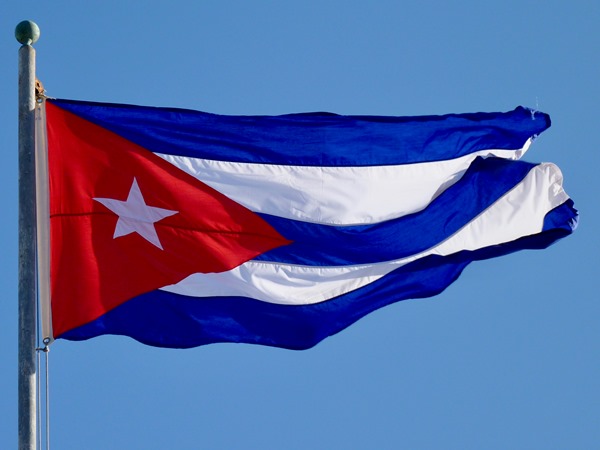
This has been the national flag of Cuba since 1902, and is often referred to as Estrella Solitaria or the Lone Star flag.

When Heather and I went to Cuba in November 2010, Fidel Castro was no longer president. He’d stepped down from the role in 2008 in favour of his younger brother, Raul. Nevertheless, Fidel Castro had been the undisputed leader of Cuba for almost 50 years, and as a result – in order to sum up Cuba in a single picture – I chose this photograph that I took of a billboard with a picture of Fidel Castro and the slogan, “Country or death”.

This picture of Heather and me was taken on our last night in Cuba when we went to El Floridita, a bar that Ernest Hemingway often frequented in Havana, to try its famous Daiquiri cocktail. Alberto Korda’s famous photograph of Ernest Hemingway and Fidel Castro was hanging on the wall above and behind us.
*******************************
POLAND
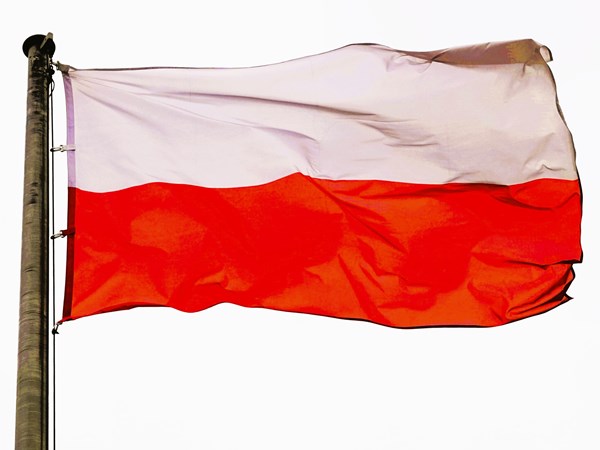
Poland’s flag, with its white and red horizontal stripes of equal width, looks very like the flags of Indonesia and of Monaco, except for the fact that their stripes are the other way round (i.e., they have red on the top, whereas the Polish flag’s red stripe is below its white stripe).

Poland’s has had a long and often tragic history – no more so than when Nazi Germany invaded Poland on 1 September 1939, an event that triggered the start of the Second World War. Less than a year later, Poland’s conquerors established a concentration camp in Oswiecim and changed the town’s name to Auschwitz. In 1941, the Third Reich extended the camp into a nearby village called Brzezinka, which was renamed Birkenau. The entire complex was the largest and, without doubt, the most notorious of the Nazi death camps: more than a million people were killed in Auschwitz-Birkenau. I took this photograph of Birkenau’s main gate – the Gate of Death – in September 2024. To this day, the scene is still deliberately very similar to the one in a famous photograph that was taken in 1945 by Stanislaw Mucha.
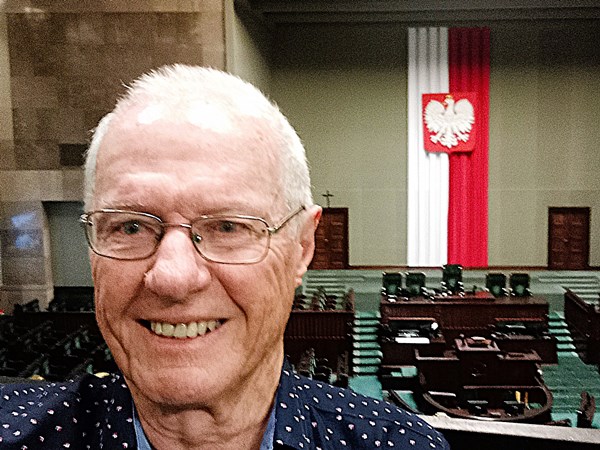
When I went to Poland in September 2024, I was given permission to visit – and to wander around in and take photographs in – the Polish parliament. I took this “selfie” when I was in the visitors’ gallery of the Sejm, the lower house of Poland’s bicameral parliament.
*******************************
HUNGARY

This red, white, and green tricolour was officially adopted as Hungary’s national flag in October 1957, a year after the country’s unsuccessful revolution against Communist rule, partly because the three horizontal bands were initially used in the 1848-49 Hungarian struggle for independence from Austria.
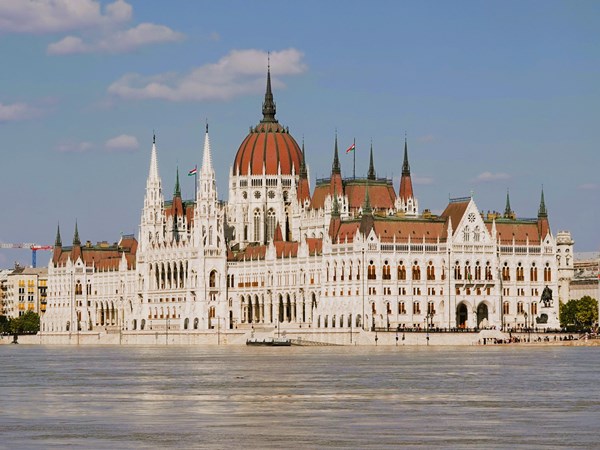
The Hungarian parliament on the left bank of the Danube river in Budapest is widely featured in advertisements and brochures promoting tourism in Hungary – so much so that a notice in its visitor centre proudly states that “according to TripAdvisor’s travellers,” the parliament is “the 10th most popular landmark in the world and the 5th most popular in Europe.”
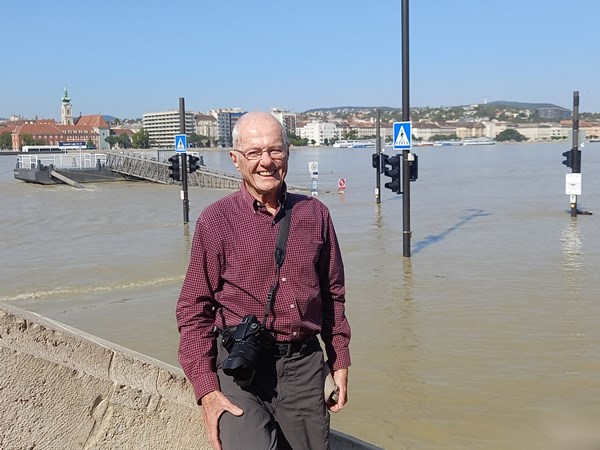
Exceptionally heavy rain and flooding in central Europe in mid-September 2024 (most notably in southern Poland, Austria, and the Czech Republic) meant that – a week or so later – the Danube overflowed its banks in Budapest, as this photograph taken of me shows: the city’s riverside roads were completely submerged, with water halfway up the traffic lights and traffic sign-poles.
*******************************
TÜRKIYE (which, until 2021, was known as TURKEY in English)

Not too surprisingly, the flag of Türkiye is called ay yildiz (moon star) in Turkish. I particularly like this picture of the country’s flag (which I took in Istanbul) because its flagpole also features a crescent moon and star.

A Lonely Planet quote perfectly sums up why I have chosen a photograph that I took of the Hagia Sophia to represent Türkiye: “Commissioned by Emperor Justinian, consecrated as the Hagia Sophia (Church of Divine Wisdom) in 537, converted to a mosque by Sultan Mehmet II (Mehmet the Conqueror) in 1453, declared a museum by Atatürk in 1935, and reconverted into a working mosque in 2020; the Aya Sofya’s changing status mirrors the history of Istanbul … [and] remains central to” the story of Türkiye.
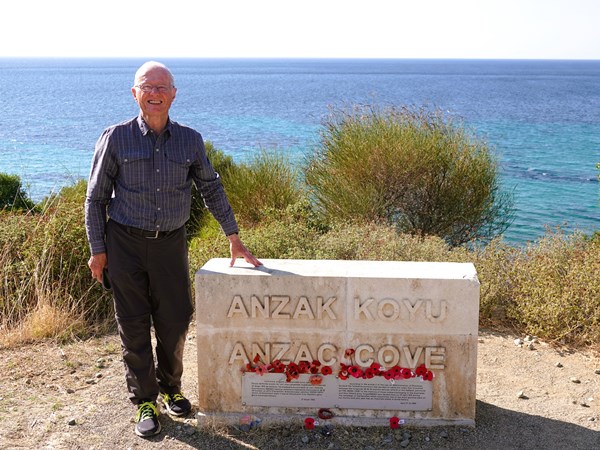
While I was in Türkiye in September 2024, I visited Gallipoli, and this picture of me was taken at Anzac Cove. On 25 April 1915, 16,000 Australian and New Zealand troops landed here at the start of a disastrously unsuccessful eight-month attempt to occupy the peninsula, during which more than 8,700 Australians and more than 2,700 New Zealand troops were killed.
*******************************
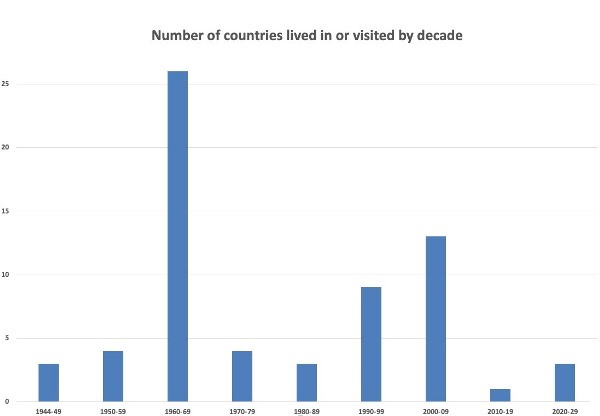
Finally, this is a histogram with a decade-by-decade summary of the number of countries I’ve lived in or visited.
*******************************
This page was first uploaded on 13 March 2023. It was amended and added to on 21 October 2024. |